« on: August 11, 2020, 05:18:15 PM »
Special Hobby 1/48 Albatros C.III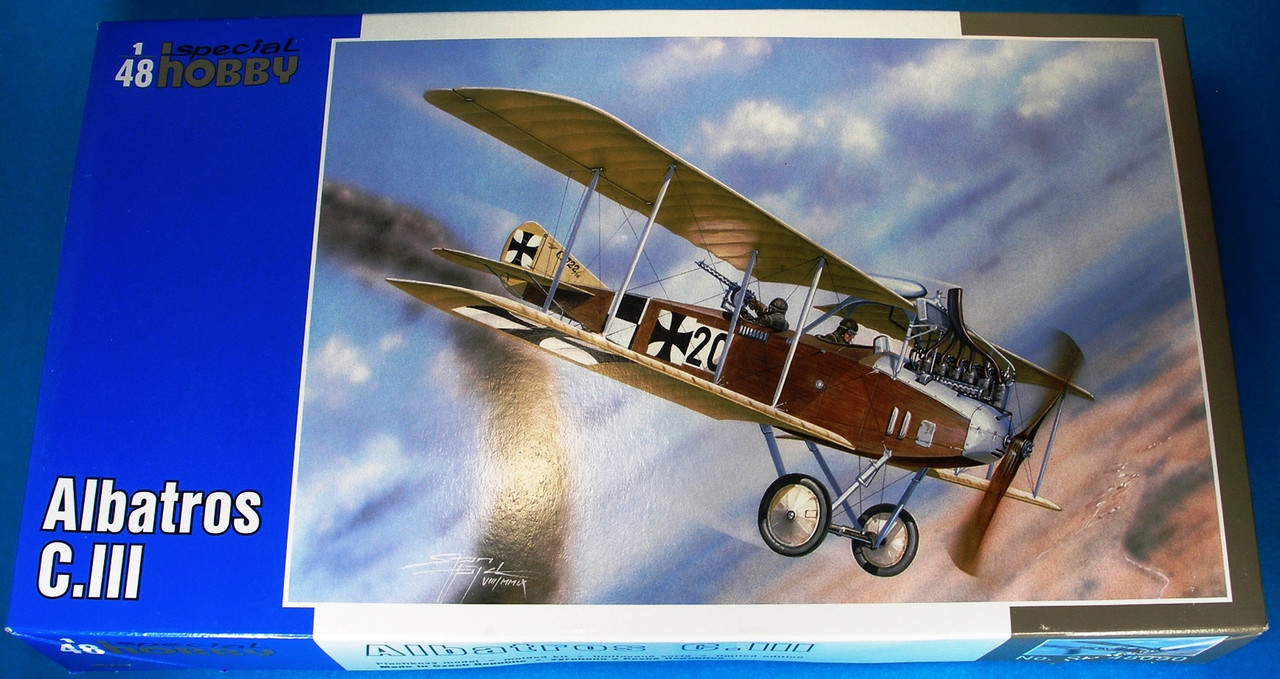
Reviewed by Brad CancianItem: RSH48090
scale: 1/48
Price: Varies – 35 Euros direct from Special Hobby, $US49 MSRP in USA. Available through hobby retailers worldwide.
Review kit kindly provided by Special Hobby at https://www.specialhobby.eu/index.php?cur=1&lang=1&
The Albatros C.III
The Albatros C.III was a highly successful German general purpose two seat aircraft, which commenced front line service in late 1915, and served through to the end of the war. The aircraft was a development of the earlier Albatros C.I. The C.III saw combat service throughout 1916, and to around mid-1917, after which it was employed heavily as training aircraft right up until the armistice. The aircraft was so popular as a trainer, and so easy to build, maintain and fly, that over 1000 brand new airframes were built from mid 1917 (after the aircraft had been pulled from front line combat duty), for training of both pilots and observers. Some seven firms were licensed to manufacture the Albatros C.III. Along with the Central Powers of Germany, Austria-Hungary and Turkey the type was used heavily after the war by the Polish, Finnish, Bulgarian Latvian and Lithuanian Air Forces.
The Bits and Bobs
Special Hobby’s C.III was released around 10 years ago (how time flies), and it is presented in Special Hobby’s usual striking box, with some beautiful and evocative box art on the front of the box. Those of you familiar with Special Hobby’s products will know what to expect – some lovely and well done grey plastic parts, some resin, and some etch. Even though the plastic is limited run, with some large sprue gates, they parts are beautifully crisp and well moulded. The kit consists of 73 plastic parts, 3 resin parts, two clear film windscreens, and 90 photo etched parts, including some 50-odd turnbuckles (a lovely touch).
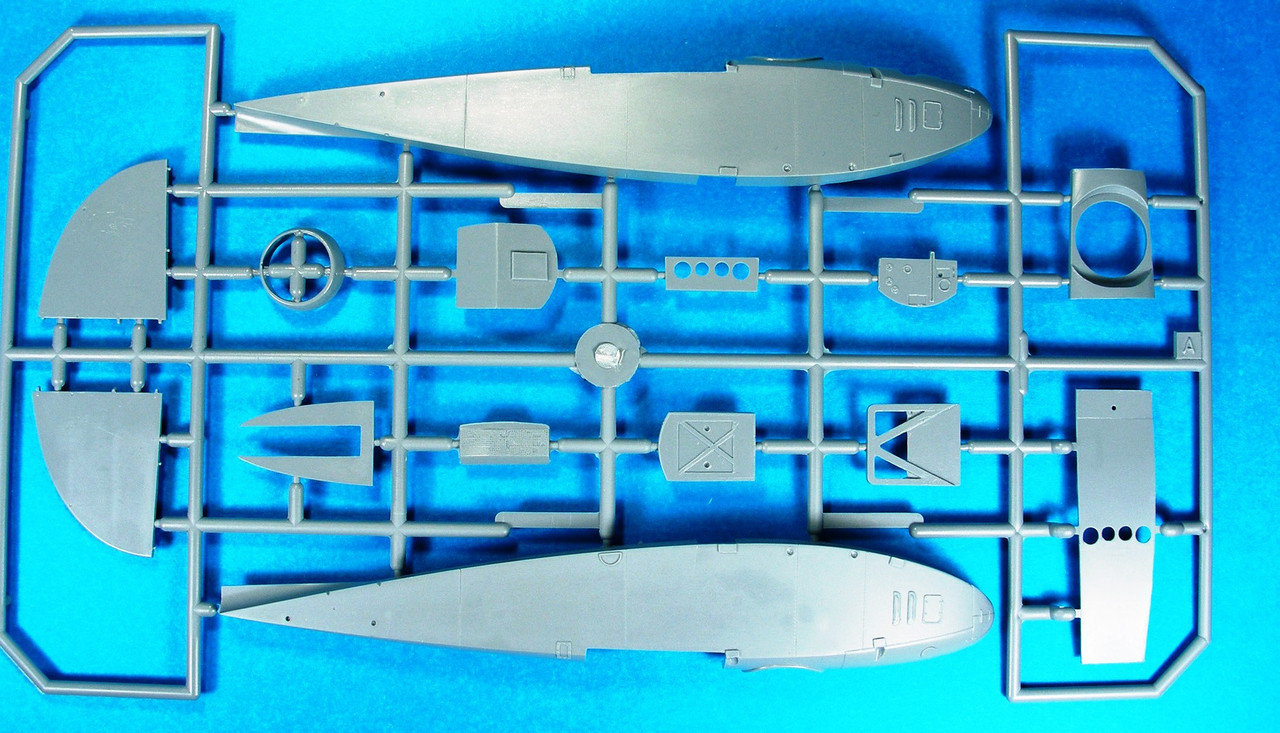
The plastic is done on three sprues. Sprue A contains the fuselage halves, cockpit bits and bobs, fuselage belly piece, and horizontal stabilisers. All parts are very crisply moulded, and the fuselage panel lines are very nicely recessed. The external details on the fuselage are crisp and finely done, with the various vents, fittings and fasteners looking lovely – these should come up nicely under a coat of paint, a wash and a dry brush. The interior framework is also very well done. The only downside is some rather hefty ejector pins right in the middle of the forward cockpit; these are prominent and will have to be dealt with. The cockpit parts are a little simplified, but it’s all there. On this sprue also is the radiator; this is blobby and the moulded-on grills are marred by sink holes, but the grills are designed to be replaced with etched parts, which is nice. You will need to fill and sand off the existing detail, however, before adding the etched parts.
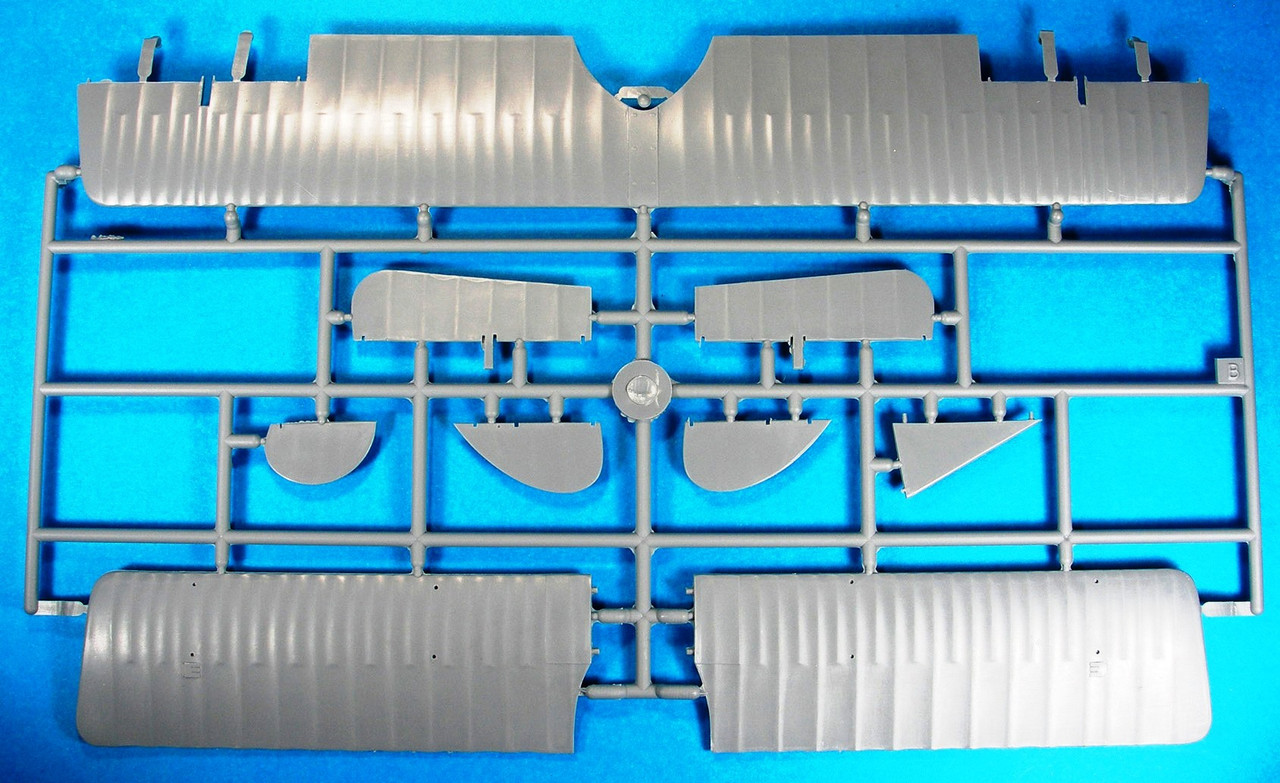
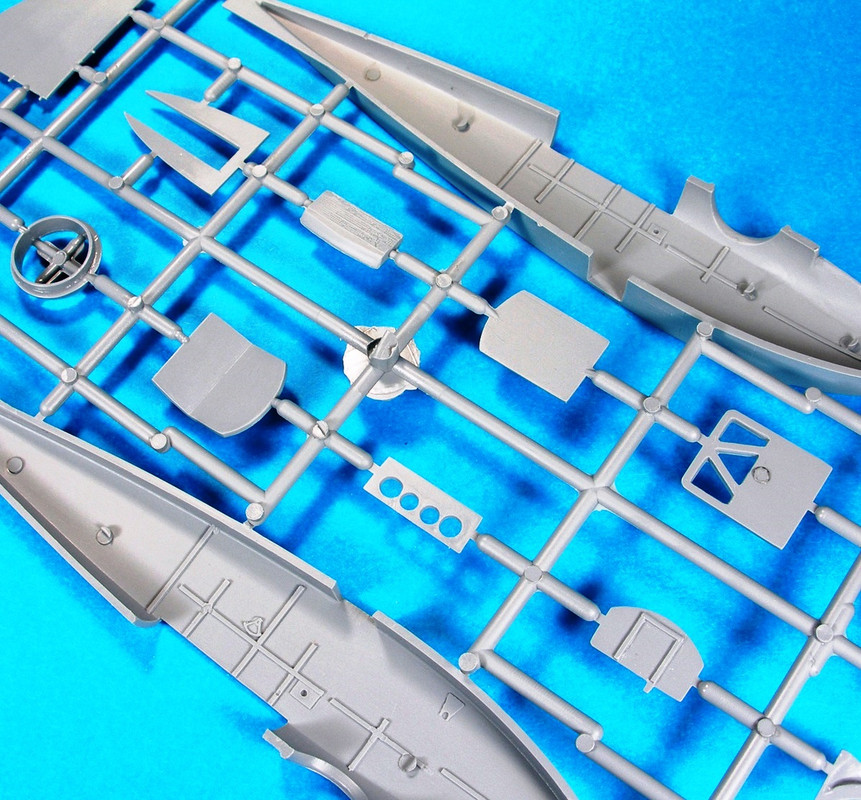
Sprue B contains the wings, and other flying surfaces. The upper wing is moulded in one piece. The rib details here are very reminiscent of the way the early Eduard kits (Albatros, Pfalz and Roland kits in particular) represented wing ribs. They are a little over-done for my tastes, but will look ok with a light sanding and a coat of paint. Another positive is that all of the control surfaces are moulded separately, allowing for them to be posed in any position.

Sprue C contains detail parts; engines, guns, struts, wheels, and various fittings. Again, these are crisply done on the whole, though there are some soft details on the guns. Luckily, etched jackets are provided to replace those of the plastic parts. The engine also looks very reminiscent of the Eduard Mercedes D.III seen in many of their Albatros / Pfalz / Roland kits. The seat also looks rather “Eduard-y”. I suspect that they are indeed the same base parts from the earlier Eduard kits.
The etched parts are lovely, and provide details for the radiator, Spandau jackets, seat belts, bomb racks, turn buckles, and some other details.

The three resin parts in the kit seem like a bit of an oddity to me. One part is the under-seat fuel tank. I am not entirely sure why this couldn’t have been done in plastic, with some etched straps. The moulding block isn’t that big so it shouldn’t be too much of an issue to clean up. The other two resin parts are exhausts. It’s nice to have the two different variants provided, but again, I am not sure why these couldn’t be done in plastic. There’s a couple of air bubbles on these parts, and the ends have not been hollowed out, which kind of defeats the purpose of doing these parts in resin, I think. In any case, some work will need to be done here.
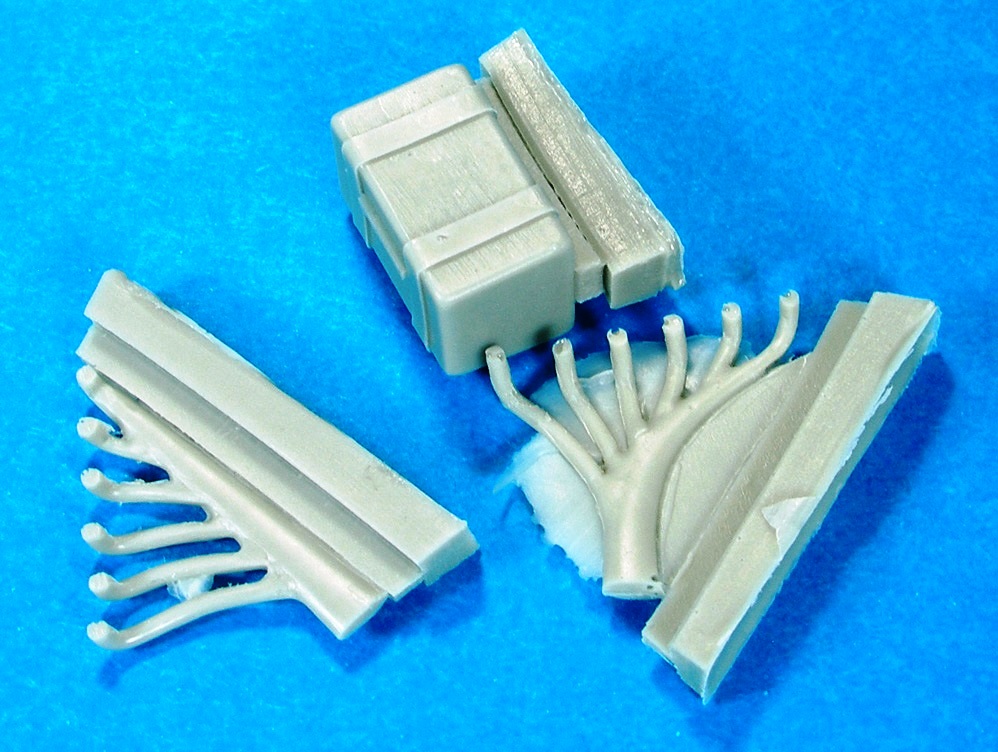
Instructions
Special Hobby’s Instructions are wonderful as usual. Instructions are provided in a small ten-page black and white booklet, with a history of the aircraft and technical specifications on the first page, an illustrated parts breakdown and construction notes on the second page, construction notes and Gunze colour callouts on the third page. A rigging guide, and painting guide for three aircraft is provided. Construction is quite standard, beginning with the interior, then engine, major construction, and rigging (have fun with all of those turn buckles!). The lower wings are only attached with small stubs; I’d recommend some wire reinforcement here for strength. The rest looks quite straight forward. There is only really one option for different variants, and that is for the exhaust pipes; the instructions tell you which of the colour schemes carried what exhaust.
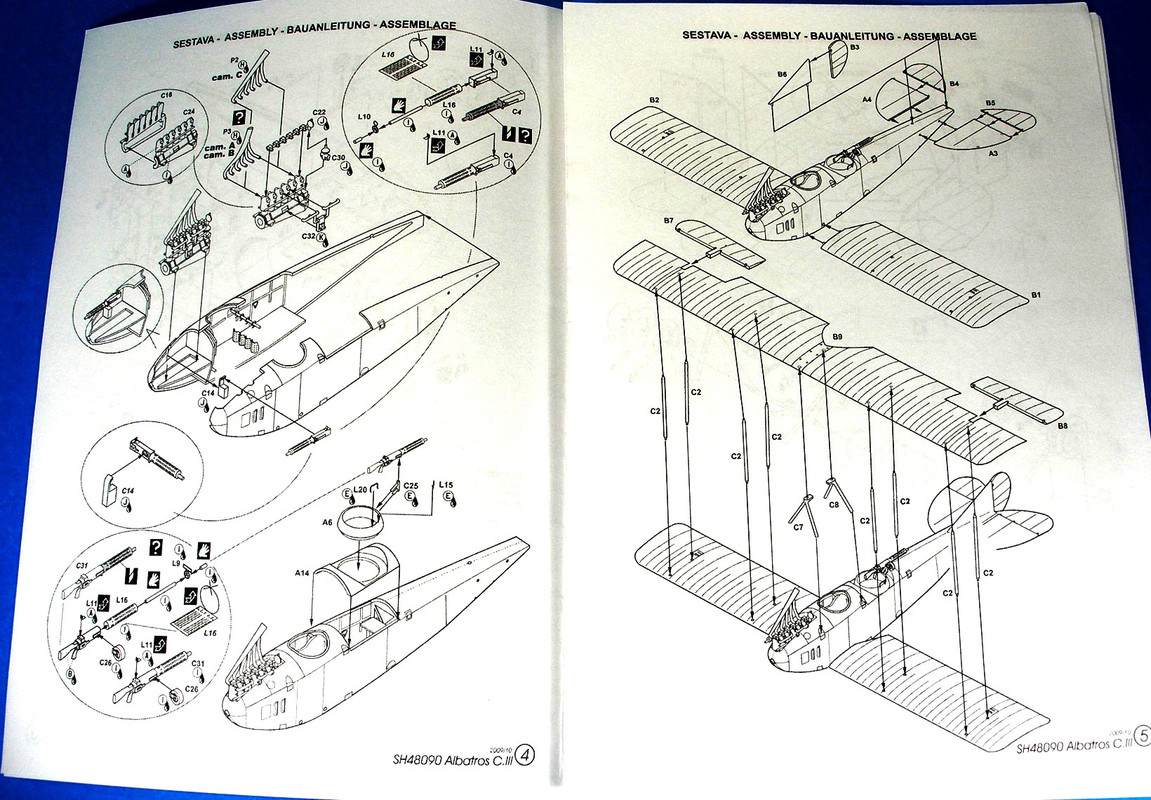
Colour schemes for three machines are provided in this boxing; all of them contain varnished ply fuselages and clear doped wings, with black and white German markings. (Note – there is a foreign operator version of this kit also available, which has some more colourful markings for those so inclined. A couple of C.IIIs even had lozenge fabric flying surfaces, so if you’re feeling brave, you may want to try your hand at that as well).
Marking options are:
• Albatros C.III, C.722/16, Kampfgeschwader IV, Kampfstaffel 20, Carignan Base, Western Front, 1916.
• Albatros C.III, C.736/16, of an unidentified unit.
• Albatros C.III, C.106/16, of an unidentified unit, Verdun, 1916.


Decals
The decals are done by Aviprint and are very nicely printed in black and white. The carrier film is glossy and thin, and the density and register look spot on. No complaints here.

Accuracy
I used the Windsock Datafile 13 as my primary reference. The overall dimensions and panels accord to the datafile, which was clearly used as the primary reference. The cockpit looks like an accurate representation of the orientation and equipment fitted to a standard C.III. Well done Special Hobby.
There are, however, a couple of interesting simplifications and omissions in the kit. Firstly, and probably most obviously, Special Hobby does not provide any parts for the prominent over-wing fuel tank. Now, this tank wasn’t fitted all the time, but it was fitted quite often – indeed the datafile contains photographs of all three marking options, one of which has this tank fitted - it’s omission is a bit odd, especially given it’s depicted on the box top and marking illustrations. The tank is an odd ‘bullet’ shape, so you might need to find a spare bomb or drop tank from the spares box as a basis to build the tank, if you want one. Secondly, the Albatros’ upper wing panels weren’t always faired at the centre, as depicted in the kit. From what I can see in the datafile, this fairing was only fitted sometimes, depending on the configuration of the upper wing tank. So, my advice is, check your references. There is also no armament other than the guns in the kit. If you want some bombs, you’ll have to source these from elsewhere. Lastly, some aspects of the reasonably prominent radiator plumbing is missing from the kit; the main pipe from the front of the engine to the front of the radiator is included, but other plumbing will need to be added. This shouldn’t be too difficult to scratch build.
Conclusions
This is another wonderful package from Special Hobby of an interesting subject. Its only competition in this scale is the very old Eduard kit from the 1990s; Special Hobby’s kit is by far the superior depiction. The only real downside to this great package is the lack of upper wing tank, and potentially the single piece upper wing – for those wanting to model the upper wing without a fairing will be easily able to do so by cutting the wing panels with a saw to separate them, so it isn’t really a big deal. The depiction of the flying surfaces’ fabric may be slightly over-done for some tastes, and the build will come with the challenge of some limited run aspects. However, builds of this kit that I have seen online show the kit to be an eye-catching and impressive model. With some careful painting, the wooden fuselage and clear doped linen flying surfaces should look wonderful. Overall, if you want to add a C.III to your collection, this is definitely the kit to go with!
Our thanks to Special Hobby for the review sample

Logged
Owner and Administrator of ww1aircraftmodels.com and forum.ww1aircraftmodels.com